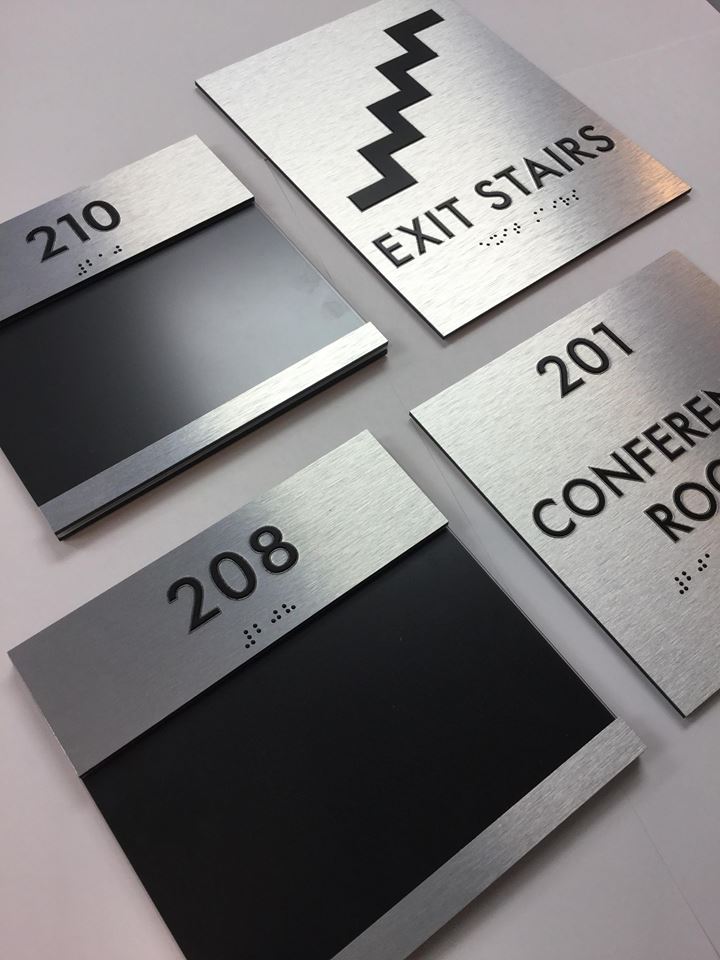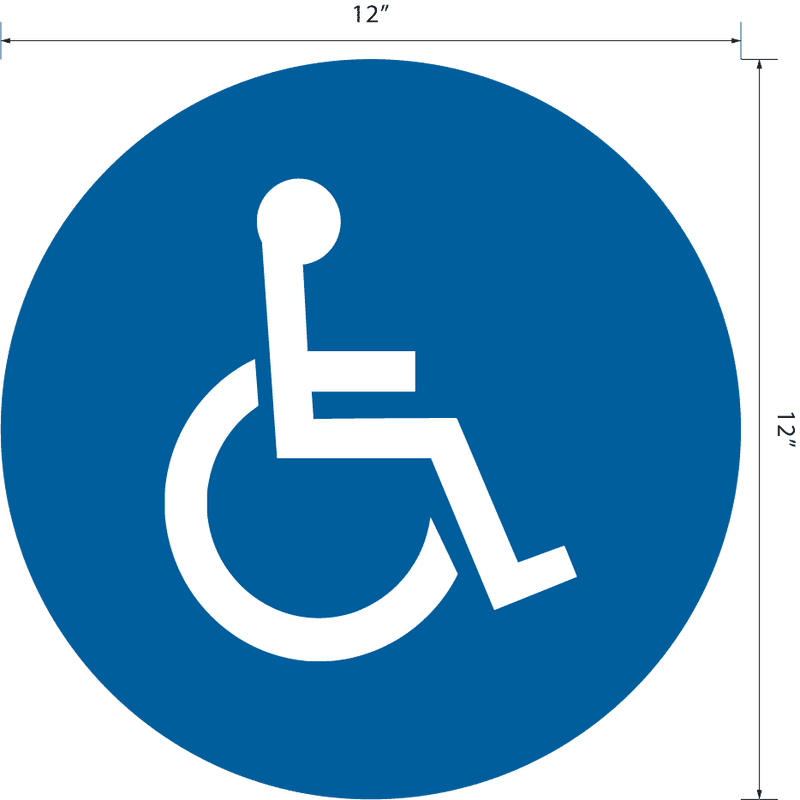Comprehending the Significance of ADA Signs for Inclusive Environments
In an increasingly varied society, the relevance of ADA signage can not be overemphasized. These signs are greater than simple conformity with legal criteria; they represent a commitment to access and inclusivity in exclusive and public spaces. By incorporating functions like high-contrast visuals and responsive characters, ADA signs plays a pivotal function in ensuring equal accessibility for individuals with handicaps. The advantages expand beyond legal conformity and access. How do these aspects change rooms into really comprehensive settings, and what effects does this have for areas and businesses committed to equality?
The Role of ADA Signage
ADA signage plays a vital duty in making certain accessibility and inclusivity in private and public spaces. These signs are essential in guiding individuals with disabilities, providing them with the necessary details to browse settings individually and securely. The Americans with Disabilities Act (ADA) states particular guidelines for signs to make certain that people with visual, auditory, or cognitive impairments can access the very same details as those without such difficulties.
The function of ADA signage expands past simple compliance with lawful demands; it symbolizes a commitment to equal rights and non-discrimination. By applying ADA-compliant indications, institutions and organizations show their commitment to creating settings where everybody, despite their physical abilities, can get involved totally and similarly. This is particularly critical in areas like healthcare facilities, academic institutions, and federal government buildings, where ease of access can straight influence a person's well-being and ability to accessibility vital services.
In addition, ADA signs adds to the total individual experience by reducing complication and improving wayfinding for all people. Clear, purposefully placed signs helps in taking care of foot web traffic, lowering blockage, and improving security. Fundamentally, ADA signs is a foundation of comprehensive design, promoting an environment where all individuals can engage and browse with their surroundings properly.
Key Parts of ADA Signs
Efficient interaction is at the heart of ADA signs, which includes several crucial components to guarantee access for people with disabilities. Among the key elements is making use of responsive characters, such as Braille and raised letters, which enable individuals with aesthetic problems to review the signs through touch. The Braille should be Grade 2 and placed straight below the matching message.

One more vital part is the placing area and elevation of the indications. ADA guidelines define that indications need to be set up at an elevation that is obtainable to all users, normally in between 48 and 60 inches from the flooring. This makes sure that they are accessible for individuals in wheelchairs or of varying heights.
Advantages for Organizations and people
While making certain access with ADA signs is a lawful need, it likewise supplies considerable advantages for both services and people. For individuals, especially those with disabilities, ADA signs provides vital ease of access to public areas.
For organizations, the implementation of ADA signs can lead to enhanced client fulfillment and commitment. By showing a commitment to availability, organizations can attract a wider client base, consisting of people with disabilities and their households, who usually look for inclusive atmospheres. Furthermore, ADA conformity can shield businesses from potential legal difficulties and penalties related to non-compliance, securing their online reputation and economic security.
In addition, ADA signs can add to a favorable office setting. Employees with disabilities gain from accessible navigation within their workspaces, promoting productivity and spirits (ADA Signs). Inevitably, spending in ADA signs not just satisfies legal obligations yet additionally boosts the inclusivity, online reputation, and functional success of services
Typical Sorts Of ADA Signage
When talking about the numerous forms of ADA signs, it is vital to understand the certain types that cater to different availability needs. ADA signs is developed to make certain that individuals with disabilities can navigate rooms safely and individually.
Another substantial kind of ADA signs is directional indicators. These supply clear guidance to numerous locations within a center, ensuring that all people, including those with wheelchair problems, can easily discover their means - ADA Signs. They frequently include icons and high-contrast colors to enhance visibility and comprehension
Informative signs are additionally vital, using crucial details concerning facilities, such as operating hours and plan guidelines. On top of that, regulative indicators share compulsory guidelines, like "No Smoking" or "Departure Course," guaranteeing conformity with safety and security methods.
Last but not least, identification signs are used to identify spaces and areas, making it easier for everyone, despite capacity, to recognize details locations. These signs typically consist of pictograms to improve universal understanding. Collectively, these common kinds of ADA signs play a crucial duty in producing comprehensive and easily accessible environments.

Executing Effective Signage Solutions
Implementing effective signs remedies calls for a calculated technique to make sure availability and conformity with the ADA requirements. The procedure starts with a comprehensive assessment of the center to recognize the certain signage requires based upon the atmosphere's function, format, and the populace it serves. This assessment needs to consist of considerations for both momentary and long-term signage, each calling for unique address design and positioning techniques.
Signs should be made from long lasting materials to stand up to Get More Info ecological elements while making sure high visibility and clarity. The assimilation of Braille and raised characters need to stick to ADA specifications to supply equivalent access.
Proper setup is the following critical step in carrying out reliable signs solutions. Indications must be positioned at certified heights and locations to ensure they are readable and quickly discoverable. Constant testimonial and upkeep of signs ensure continued compliance and efficiency. Involving with access experts during the planning and implementation phases can offer useful understandings, making certain that signs not just fulfills lawful needs yet additionally enhances the inclusivity of the environment.

Conclusion
ADA signs plays a critical duty in producing comprehensive atmospheres by ensuring compliance with accessibility standards and boosting navigating for all individuals. By cultivating much safer and extra welcoming rooms, ADA signage highlights a dedication to inclusivity, eventually adding to a more equitable culture for everyone.
By integrating attributes like tactile characters and high-contrast visuals, ADA signage plays a crucial role in making sure equivalent access for people with handicaps. The Americans with Disabilities Act (ADA) sets forth visit this page certain standards for signage to make sure that people with aesthetic, auditory, or cognitive disabilities can access the very same details as those without such challenges.
Efficient interaction is at the heart of ADA signs, which incorporates several crucial parts to ensure ease of access for individuals with specials needs.While making certain accessibility with ADA signage is a legal demand, it additionally supplies significant benefits for both individuals and companies. ADA signage is created to make certain that people with handicaps can browse rooms safely and independently.